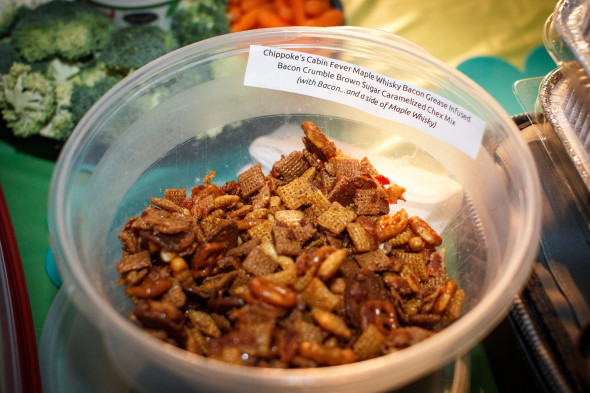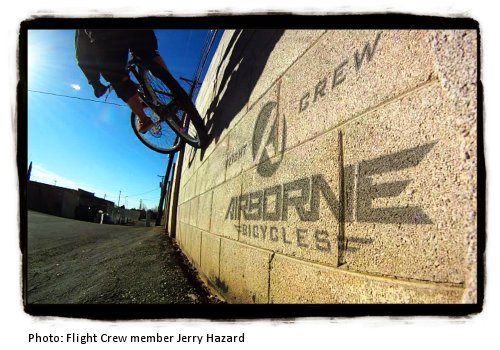We see them every day, the planes bearing the letters “VN” on their tail, signifying they are from Vance Air Force Base.
We hear the roar of their engines and see the sun glinting off their wings as they traverse the skies over northwest Oklahoma.
But another large part of the base’s pilot training mission is carried out far from public sight, inside Vance’s Ops Group building.
In this building, in rooms chilled year-round no matter the temperatures outside, a dedicated group of men and women work to keep a vital part of Vance’s training mission up and running.
They are the simulator technicians.
Much of each student pilot’s training is conducted inside these multi-million dollar machines, which are used to teach pilots to cope with all kinds of different situations they will encounter in an airplane, all without leaving the ground. In a simulator there is no danger to the student or instructor, and the lessons can be conducted without burning any fuel.
The people charged with keeping these sophisticated machines up and flying have to be versatile, able to deal with computer, electronic, visual and even mechanical issues.
Ron Hall has been working on simulators at Vance since 1977, when instead of computers, terrain model boards and closed circuit TV cameras were used to simulate flight.
He is one of three T-1 simulator technicians at Vance employed by L-3 Communications, who maintain two full training simulators and 3 part-task trainers. Part-task trainers are used to teach students to program their onboard computers to guide the plane to 100 waypoints around the country, but can’t simulate takeoffs or landings.
Ron Hall said maintaining the T-1 sims keeps him and his colleagues busy.
“There’s quite a bit (of maintenance) because you have alignment in the visual systems,” he said. “Your hydraulic systems have to be tweaked or aligned, all your (control) surfaces. Your power supplies, there’s tons of power supplies, computers, fans.”
The T-1 sims were built in 1988 and installed at Vance in 1990. Trying to maintain them is like trying to keep a 20-year-old PC running.
“I have diversified 486 and 386 computers in my sound system,” Ron Hall said. “Try to find old hard drives to work in that kind of equipment. They sent us a lot of used F-16 visual systems that we use to keep the T-1s going. They don’t manufacture tubes anymore so we have to rely on older tubes or older remanufactured tubes to keep our visuals going.”
The T-1 simulators are being upgraded, however, a process expected to be completed by 2013. Vance normally has three full training simulators, but one has been removed for an upgrade.
The T-1 sims are operated 16 hours a day, meaning there are two shifts of technicians working to keep them flying.
“We have an hour and a half in the morning for maintenance to get them up and ready, and two hours at night to put them to bed,” Ron Hall said. “I really enjoy keeping the simulators working. It’s a lot of electronics in all kinds of fields.”
Vance’s T-6 and T-38 simulators are maintained by 13 technicians employed by FlightSafety International. Michael Oaks, the site manager, dubbed his men and women, “The Trunk Monkey Squad,” after the stars of a series of TV automobile dealer commercials depicting cars that carried magical chimps in their trunks, who came to the rescue in difficult situations when the drivers pushed the “trunk monkey” button on the dashboard.
“I have absolutely the best crew, anywhere, and I’ll stake my very reputation on that,” Oaks said. “They don’t get the recognition, they do the grunt work of the simulator world, but it doesn’t happen without them.”
There are 17 T-6 simulators. There are five operational flight trainers, which feature high-resolution graphics and a 270-degree field of view that give students the closest experience to actually flying. There are seven instrument flight trainers with a cockpit and forward visual display and five unit trainers, with no visual systems but fully functioning cockpits designed to teach cockpit familiarization.
“As parts fail, we spend a lot of time on them,” said T-6 technician Ben Tucker, “but we have preventative maintenance we follow on a daily, weekly, monthly and semi-annual basis. We have checklists galore on all our preventative maintenance.”
That is the routine maintenance, but there is plenty of the non-routine type as well.
“When one of those projectors just decides to not turn on one day, we get to figure out why,” Tucker said. “If we’re bringing them up in the middle of the night, we can have a couple of hours, but if it happens at 11 o’clock in the morning we have 15 minutes to get it going before we start losing missions and devoting our entire day shift to fixing it.”
“As a general rule we’ll have at least one or two system failures of some kind a week,” said Oaks, “be it something small like an instrument or something big like a computer or a projector.”
Day shift technicians, Oaks said, “sit around waiting for the fires,” while night shift techs “do all the dirt and grime.”
T-6 and T-38 simulators are used in a daily 12-hour window, from the time of the first flight to the last.
Technicians don’t only fix simulators, they have to be able to fly them, too.
“We do daily pre-flights to make sure that every device is fully functional and operational for the next day of training,” Tucker said.
The T-38 sims, said technician Phil Johnson, “are pretty well built, they don’t require really high maintenance.”
Vance has two T-38 weapons systems trainers, which allow pilots to dogfight against one another with full simulated weapons. These have 14 projectors and 18 computers to produce the full wraparound graphics.
There are two operational flight trainers, without the weapons and with a 216-degree by 135-degree vertical field of view. And there are three unit training devices, a cockpit with a 40-degree field of view.
There is one big advantage to being a simulator technician, Johnson said, particularly in the summer. The simulator rooms always are kept cool in deference to the delicate equipment.
“They worry more about the equipment than the people,” he said, laughing. “It’s fun to keep it all running.”
“I enjoy puttering around and fixing all the small problems,” said T-38 technician Mark Ewald.
“The best part of this job is the diversity of the things you have to do,” said T-38 tech Robert Hall.
Source: The Enid News and Eagle
Byline: Jeff Mullin, Senior Writer















